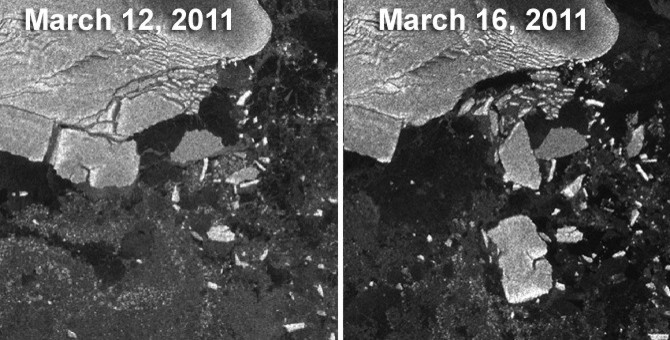Japan's Tsunami Caused Huge Iceberg to Break Off of Antarctica

[MUST READ] Life on Earth Could Have Started from Outer Space
Scientists have long suspected icebergs to have a link with earthquakes.
When the huge March 11 earthquake triggered the Tohoku Tsunami in Japan that flattened entire coastal towns and killed nearly 16,000, scientists knew that tracking the wave could provide visual proof of the connection.
The undersea megathrust earthquake had a staggering magnitude of 9.0 (Mw), and triggered waves of up to 133 feet high. Scientists were able to track the wake over 8,000 miles as it sprawled through the Pacific and Southern oceans.
Just 18 hours after the tsunami, a wave of 1-foot height struck the ice shelf in Antarctica. The Sulzberger ice shelf is a sheet of ice 260 feet thick that extends towards New Zealand. It hasn't budged in nearly 50 years, but the pressure from the wave was strong enough to snap off massive pieces of ice. One of them measured four by six miles in surface area, nearly the size of Manhattan.
Satellite imagery enabled scientists to see the "calving," or break off of the iceberg, proving that seismic events can certainly lead to other effects far from the site of the event, across the globe.
[MUST READ] Meteorites contain DNA Building Blocks
© Copyright IBTimes 2024. All rights reserved.




















